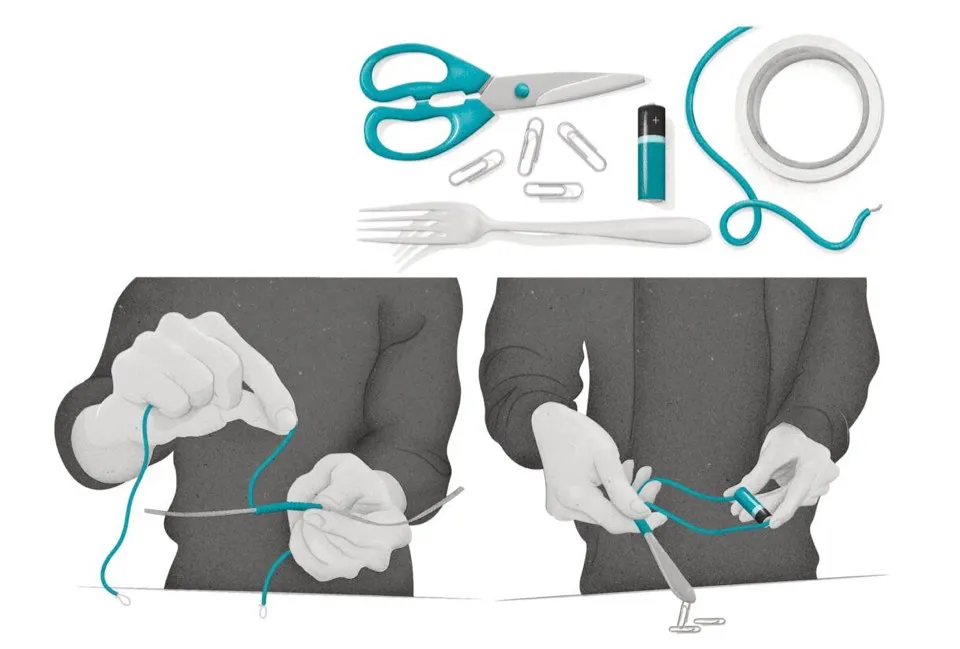What you'll need
- About one metre of insulated wire (you can get this from an unused power cable or phone charger)
- Wire stripper or scissors
- Stainless steel dessert spoon or fork
- Sticky tape
- Battery (size AA, AAA or C will work)
- Paperclips (or drawing pins)
What to do
- Strip about 2cm of the insulation off both ends of the wire using a wire stripper or scissors.
- Twist each uninsulated end of the wire firmly to bring together any loose fine wires, making a thick braid of wire. Fold this in half and twist it into a flat loop at each end (this will make it easier to get a good contact with the battery terminals).
- Starting about 10cm from one end of the wire, coil the wire tightly around the handle of your spoon or fork. Do not overlap the coils, and leave about 10cm of uncoiled wire at the other end.
- Wrap sticky tape around the coils of wire to hold them in place.
- Using the thumb and finger of one hand, press each end of the wire against opposite ends of the battery.
- Using your other hand, hold the spoon or fork and use it to magnetically pick up paperclips or drawing pins.

What's the science?
Electromagnets are a particular type of magnet that only work when an electric current is passed through them.
They rely on the fact that a movement of charged particles (in this case, electrons) creates a magnetic field. In fact, all magnetic fields arise from the movement of charge.
Most objects are non-magnetic because the individual magnetic fields of the electrons moving around inside them are randomly aligned and cancel each other out.
When you connect the wire to the battery, electrons begin to flow in the same direction through the wire, and this generates a magnetic field around the wire. By coiling the wire around a stainless steel core, you’re creating a combined magnetic field in the wire and core, which is strong enough to pick up objects.
Electromagnets are useful because their magnetic fields can easily be controlled: the greater the current, the stronger the magnetic field. Increasing the number of coils also increases the magnetic field.
This activity demonstrates that electricity and magnetism are essentially two aspects of the same phenomenon, called ‘electromagnetism’.

